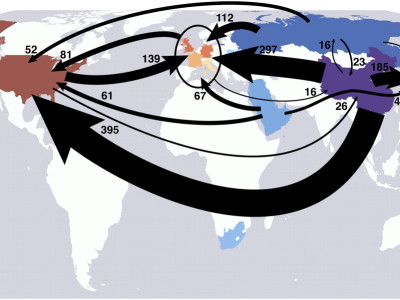GHGs
Guest Bloggers Amy Vanderwarker and Kay Cuajunco: Equity at the Center: SB 775 and AB 378 Create New Path Towards More Equitable, Effective Climate Policy
By Prioritizing Equity, We Fight Climate Change, Improve Local Air Quality and Public Health, and Deliver Economic Benefits
California is at a crossroads in our strategy to fight climate change. With the current form of cap and trade due to end in 2020, our state is deciding to what extent carbon pricing will play a role in meeting the 2030 targets enacted in 2016, and if so, what the program will look like. …
CONTINUE READINGGuest Blogger Dallas Burtraw: Three Revisions Not to Overlook in California’s New Cap-and-Trade Proposal, SB 775
The Proposal Would Eliminate Allowance Banking and Offsets, and Add a Border Adjustment Mechanism
The California cap-and trade-program is already the most rigorous and best-designed allowance market in the world. Its purpose is to reduce greenhouse gas emissions that contribute to climate change. But now the program requires adjustments for political and legal reasons. These adjustments will be a vitally important legislative decision – for the state and the …
CONTINUE READING“California Alone” Should Not Govern State Climate Policy
SB 775 Turns California Inward and Diminishes Its Role As Global Leader
Last week, Senator Bob Wieckowski (D-Fremont) introduced a new bill, SB 775, that would replace California’s cap-and-trade system with a new approach to regulating California’s greenhouse gas emissions beginning in 2021. There is much to admire in the new bill, including an aggressive pricing approach that would ensure that California’s carbon price remains high. The …
Continue reading ““California Alone” Should Not Govern State Climate Policy”
CONTINUE READINGThe Future of California’s Greenhouse Gas Cap and Trade Program After 2020: A Conversation
Posts on Legal Planet Over the Coming Week, Linked Here, Will Address Pending California Legislation on Cap and Trade from Multiple Perspectives
This post is the preface to a series of posts by multiple authors (including guests) over the coming week (starting May 9) about the future of the state’s cap and trade program for greenhouse gases. Two bills, AB 378 and SB 775, are being debated by the environmental and environmental justice communities, and our bloggers …
CONTINUE READINGThe Trump Administration’s False Stories About the Environmental Protection Agency Are Meant to Take the Agency Down
Donald Trump and Scott Pruitt Distort the Facts About EPA’s Mission, History, and Success
The Trump Administration has made clear its plans to systematically dismantle the Environmental Protection Agency. Destroying the EPA will be a key element of the administration’s fight, in the words of White House policy advisor Steve Bannon, to achieve the “deconstruction of the administrative state.” [Update 8/22/17: Bannon is out, but that doesn’t change the Administration’s …
CONTINUE READINGPrioritizing Livestock Emissions
How do you solve a problem like manure?
Under AB 32, California’s climate change law, “greenhouse gas” is defined to include carbon dioxide, methane, nitrous oxide, and some fluorinated gases. But the bulk of the state’s efforts to date have focused primarily on the first. CO2 is undeniably the primary offender: It accounts for about three quarters of annual global emissions, and is …
Continue reading “Prioritizing Livestock Emissions”
CONTINUE READINGIPCC Report Highlights Need for Rapid Shift to Renewable Energy; Delay Will be Costly
Meanwhile, EPA Considers Methane Regulations for Oil and Gas Production
According to the newest Intergovernmental Panel on Climate Change (IPCC) mitigation report, only a few decades remain to halt the worst effects of global climate change. To meet climate goals, globally we will need to reduce emissions to 40 to 70 percent below today’s levels, by mid-century. Delaying action will be enormously costly from an …
CONTINUE READINGPassing Gas
A better accounting of GHGs can improve the climate discourse
The tendency to divide global GHG emissions by country is a product of the well-mixed dispersal of most of warming gases, and the international politics that attach to cross-border pollution. A country’s emission numbers imply accountability and culpability, and frame the discourse on how to respond. Going forward on policymaking, it’s worth looking at how …
Continue reading “Passing Gas”
CONTINUE READINGMight recent events allow Governor Brown to consider a new direction for AB 32 implementation?
My colleague Jonathan Zasloff suggests that environmental justice groups are using litigation to try to get leverage for some sort of compensation or other measures, rather than to actually stop the state’s cap-and-trade program for greenhouse gases. I doubt that. But what I do wonder — with no evidence, but I can speculate wildly on …
CONTINUE READINGCan the Air Resources Board continue to implement measures to reduce greenhouse gases?
One interesting feature of the court decision preventing the state from moving forward with AB 32 is that the court’s decision seems to halt implementation of the entire scoping plan. As I’ll explain, this is an odd result, and one that may be legally required but doesn’t make practical sense. The legal flaw the court …
CONTINUE READING







